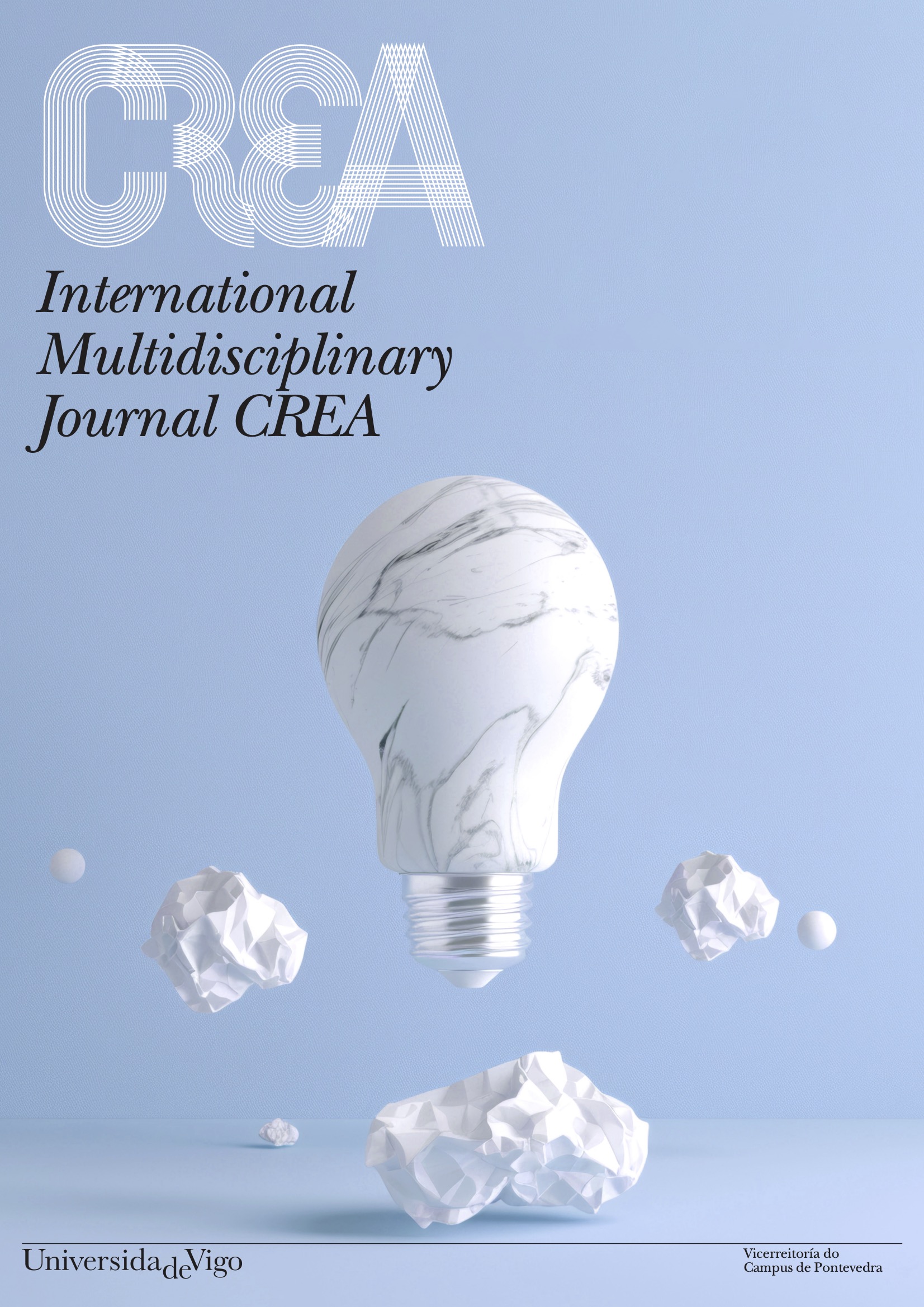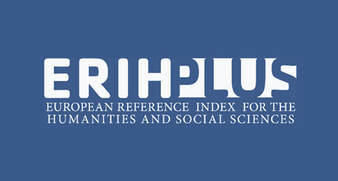Therapeutic Exercise and Psychological Well-Being in Women Victims of Gender-Based Violence: Study Protocol
DOI:
https://doi.org/10.35869/5654Keywords:
Gender-Based Violence, Anxiety, Depression, Exercise Therapy, Physical therapy Modalities, Mental HealthAbstract
Background.: Women victims of gender-based violence suffer from deteriorating mental health, reporting anxiety, stress or depression. The efficacy of therapeutic exercise in mental health is widely evidenced. However, the effects of therapeutic exercise on this population are not clearly known. Purpose: to evaluate the effects of a therapeutic exercise programme on the psychological well-being of women victims of gender-based violence. Methods: The study will involve women victims of gender violence who attend the Women's Information Centres of Poio and Pontevedra. The intervention group will perform two weekly exercise sessions for 8 weeks supervised by a physiotherapist. The control group will perform the same exercise at home with the support of a mobile application but without professional supervision. Results: the general hypothesis of the results is that the therapeutic exercise group would significantly improve the psychological well-being of women victims of gender violence, compared to the control group, which would maintain its baseline values of psychological well-being. The aim is to provide relevant data on the beneficial effects of physiotherapy in mental health through therapeutic exercise on the psychological well-being of victims of gender violence in order to be able to safely incorporate therapeutic exercise in multidisciplinary strategies for the treatment of battered women.
Downloads
References
Probst, M. (2017). Physiotherapy and Mental Health. Clinical Physical Therapy. https://doi.org/10.5772/67595
Vallejo, A.; Córdoba, M. (2012). Abuso sexual: tratamientos y atención. Revista de Psicología, 30(1), 1–28.
Andersen, E.; Geiger, P.; Schiller, C.; Bluth, K.; Watkins, L.; Zhang, Y.; Xia, K.; Tauseef, H.; Leserman, J.; Girdler, S.; Gaylord, S. (2021). Effects of mindfulness-based stress reduction on experimental pain sensitivity and cortisol responses in women with early life abuse: A randomized controlled trial. Psychosom Med, 83(6), 515–527. https://doi.org/10.1097/PSY.0000000000000889
Catalán Matamoros, D. J. (2019). Fisioterapia en salud mental: antecedentes históricos. Revista Colombiana de Rehabilitación, 18(2), 162–180. https://doi.org/10.30788/revcolreh.v18.n2.2019.394
Ross, R. E.; VanDerwerker, C. J.; Saladin, M. E.; Gregory, C. M. (2023). The role of exercise in the treatment of depression: Biological underpinnings and clinical outcomes. Mol Psychiatry, 28(1), 298–328. https://doi.org/10.1038/s41380-022-01819-w
Herring, M. P.; Johnson, K. E.; O’Connor, P. J. (2016). Exercise training and health-related quality of life in generalized anxiety disorder. Psychol Sport Exerc, 27, 138–141. https://doi.org/10.1016/j.psychsport.2016.08.011
Herring, M.; Kline, C.; O’Connor, P. (2015). Effects of exercise training on self-reported sleep among young women with generalized anxiety disorder (GAD). European Psychiatry, 30, 465. https://doi.org/10.1016/S0924-9338(15)31893-9
Herring, M. P.; Jacob, M. L.; Suveg, C.; Dishman, R. K.; O’Connor, P. J. (2012). Feasibility of exercise training for the short-term treatment of generalized anxiety disorder: A randomized controlled trial. Psychother Psychosom, 81(1), 21–28. https://doi.org/10.1159/000327898
Instituto Nacional de Estadística (INE). (2024). Instituto Nacional de Estadística. Estadística de violencia doméstica y violencia de género. Últimos datos. https://www.ine.es/dyngs/INEbase/es/operacion.htm?c=Estadistica_C&cid=1254736176866&menu=ultiDatos&idp=1254735573206
Jonker, I. E.; Lako, D. A. M.; Beijersbergen, M. D.; Sijbrandij, M.; van Hemert, A. M.; Wolf, J. R. L. M. (2019). Factors related to depression and post-traumatic stress disorder in shelter-based abused women. Violence Against Women, 25(4), 401–420. https://doi.org/10.1177/1077801218790700
Oram, S.; Khalifeh, H.; Howard, L. M. (2017). Violence against women and mental health. Lancet Psychiatry, 4(2), 159–170. https://doi.org/10.1016/S2215-0366(16)30261-9
Mondolfi Miguel, M. L.; Rosa Pino-Juste, M. (2019). Psycho-social profile of battered women in Galicia, Spain: Distress as a result of intimate partner violence and child abuse. Health Care Women Int, 40(11), 1229–1248. https://doi.org/10.1080/07399332.2019.1571061
Bigarella, L. G.; Ballotin, V. R.; Mazurkiewicz, L. F.; Ballardin, A. C.; Rech, D. L.; Bigarella, R. L.; Selistre, L. da S. (2022). Exercise for depression and depressive symptoms in older adults: An umbrella review of systematic reviews and meta-analyses. Aging Ment Health, 26(8), 1503–1513. https://doi.org/10.1080/13607863.2021.1951660
Chong, T. W. H.; Kootar, S.; Wilding, H.; Berriman, S.; Curran, E.; Cox, K. L.; Bahar-Fuchs, A.; Peters, R.; Anstey, K. J.; Bryant, C.; Lautenschlager, N. T. (2022). Exercise interventions to reduce anxiety in mid-life and late-life anxiety disorders and subthreshold anxiety disorder: A systematic review. Ther Adv Psychopharmacol, 12, 204512532211049. https://doi.org/10.1177/20451253221104958
Legrand, F. D.; Crombez-Bequet, N. (2022). Physical exercise and self-esteem in women facing lockdown-related domestic violence. J Fam Violence, 37(6), 1005–1011. https://doi.org/10.1007/s10896-021-00308-y
Gordon, B. R.; McDowell, C. P.; Lyons, M.; Herring, M. P. (2020). Acute and chronic effects of resistance exercise training among young adults with and without analogue generalized anxiety disorder: A protocol for pilot randomized controlled trials. Ment Health Phys Act, 18, 100321. https://doi.org/10.1016/j.mhpa.2020.100321
World Health Organization. (n.d.). Global recommendations on physical activity for health. https://www.who.int/dietphysicalactivity/physical-activity-recommendations-18-%0A64years.pdf?ua=1
American College of Sports Medicine. (2009). Progression models in resistance training for healthy adults. Med Sci Sports Exerc, 41(3), 687–708. https://doi.org/10.1249/MSS.0b013e3181915670
Santandreu, M.; Laura, O.; De, T.; Llanos, L.; Vallejo, R. R. (2014). Violencia de género y autoestima: Efectividad de una intervención grupal. Revista de Psicología, 32(1), 57–63.
Gonzalez-Guarda, R. M.; Vermeesch, A. L.; Florom-Smith, A. L.; McCabe, B. E.; Peragallo, N. P. (2013). Birthplace, culture, self-esteem, and intimate partner violence among community-dwelling Hispanic women. Violence Against Women, 19(1). https://doi.org/10.1177/1077801212475336
Liu, M.; Wu, L.; Ming, Q. (2015). How does physical activity intervention improve self-esteem and self-concept in children and adolescents? Evidence from a meta-analysis. PLoS One, 10(8). https://doi.org/10.1371/journal.pone.0134804
Callahan, M. R.; Tolman, R. M.; Saunders, D. G. (2003). Adolescent dating violence victimization and psychological well-being. J Adolesc Res, 18(6). https://doi.org/10.1177/0743558403254784
Coker, A. L.; McKeown, R. E.; Sanderson, M.; Davis, K. E.; Valois, R. F.; Huebner, E. S. (2000). Severe dating violence and quality of life among South Carolina high school students. Am J Prev Med, 19(4). https://doi.org/10.1016/S0749-3797(00)00227-0
Reyes-Molina, D.; Nazar, G.; Cigarroa, I.; Zapata-Lamana, R.; Aguilar-Farias, N.; Parra-Rizo, M. A.; Albornoz-Guerrero, J. (2022). Comportamiento de la actividad física durante la pandemia por COVID-19 y su asociación con el bienestar subjetivo y salud mental en estudiantes universitarios en Chile. Terapia psicológica, 40(1), 23–26. https://doi.org/10.4067/s0718-48082022000100023
Delara, M. D. (2016). Mental health consequences and risk factors of physical intimate partner violence. Ment Health Fam Med, 12(1). https://doi.org/10.25149/1756-8358.1201004
Stein, M. B.; Kennedy, C. M.; Twamley, E. W. (2002). Neuropsychological function in female victims of intimate partner violence with and without posttraumatic stress disorder. Biol Psychiatry, 52(11). https://doi.org/10.1016/S0006-3223(02)01414-2
Del, M.; Beltrán, C.; Freyre, M.-Á.; Hernández-Guzmán, L. (2012). The Beck Depression Inventory: Its validity in adolescent population. Revista de Psicología, 30, 5–13.
Gujral, S.; Aizenstein, H.; Reynolds, C. F.; Butters, M. A.; Erickson, K. I. (2017). Exercise effects on depression: Possible neural mechanisms. General Hospital Psychiatry. https://doi.org/10.1016/j.genhosppsych.2017.04.012
Armour, C.; Elhai, J. D.; Richardson, D.; Ractliffe, K.; Wang, L.; Elklit, A. (2012). Assessing a five factor model of PTSD: Is dysphoric arousal a unique PTSD construct showing differential relationships with anxiety and depression? J Anxiety Disord, 26(2). https://doi.org/10.1016/j.janxdis.2011.12.002
Taylor, S.; Asmundson, G. J. G.; Carleton, R. N. (2006). Simple versus complex PTSD: A cluster analytic investigation. J Anxiety Disord, 20(4). https://doi.org/10.1016/j.janxdis.2005.04.003
Lagdon, S.; Armour, C.; Stringer, M. (2014). Adult experience of mental health outcomes as a result of intimate partner violence victimisation: A systematic review. Eur J Psychotraumatol, 5. https://doi.org/10.3402/ejpt.v5.24794
Echeburúa, E.; Amor, P. J.; Sarasua, B.; Zubizarreta, I.; Holgado-Tello, F. P.; Muñoz, J. M. (2016). Escala de gravedad de síntomas revisada (EGS-R) del trastorno de estrés postraumático según el DSM-5: Propiedades psicométricas. Terapia psicológica, 34(2), 111–128. https://doi.org/10.4067/S0718-48082016000200004
Crombie, K. M.; Sartin-Tarm, A.; Sellnow, K.; Ahrenholtz, R.; Lee, S.; Matalamaki, M.; Adams, T. G.; Cisler, J. M. (2021). Aerobic exercise and consolidation of fear extinction learning among women with posttraumatic stress disorder. Behaviour Research and Therapy, 142. https://doi.org/10.1016/j.brat.2021.103867
Downloads
Published
How to Cite
Issue
Section
License
Copyright (c) 2025 International Journal of Multidisciplinary CREA (IJMC)

This work is licensed under a Creative Commons Attribution-NonCommercial-NoDerivatives 4.0 International License.
Copyright
After the acceptance of an article, the authors will be asked to complete a Publication Agreement. Acceptance of the agreement will guarantee the widest possible dissemination of information. Under this agreement, the copyright will be transferred to the Company / Institution if the manuscript is accepted for publication. Permission from the Company / Institution is required for resale or distribution outside the institution and for all other derivative works, including compilations and translations. If extracts from other copyrighted works are included, the author (s) must obtain written permission from the owners of the copyright and credit rights of the source (s) in the article.
Rights of users
All the articles published in the magazine will be immediately and permanently accessible so that any user can read and download them. The (Re) use allowed for third parties of the published content will be defined by the following Creative Commons license: Creative Commons Attribution-Noncommercial-No Derivative Works (CC BY-NC-ND). For non-commercial purposes, allow others to distribute and copy the article. It also allows its inclusion in a collective work (such as an anthology), provided that the author (s) is cited and the article is not altered or modified.
Publication cost
The author of the accepted articles should not pay for its publication. The Society or the Institution that owns the journal finances the production costs of the manuscripts.








